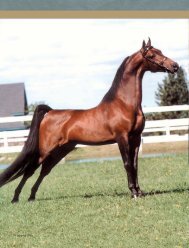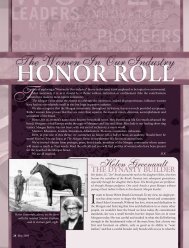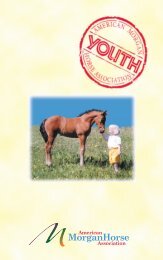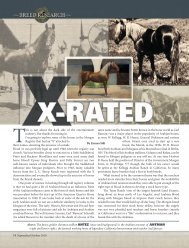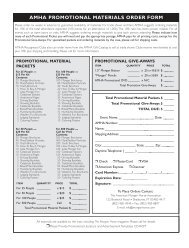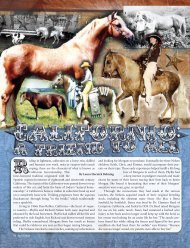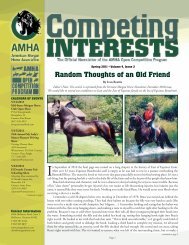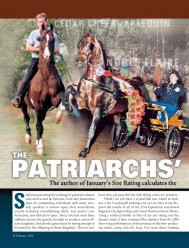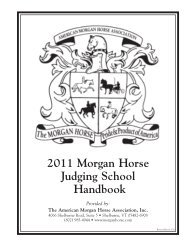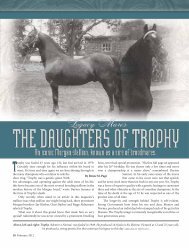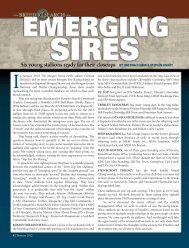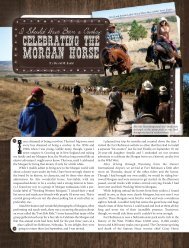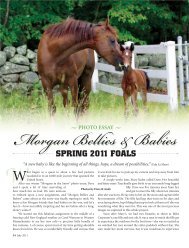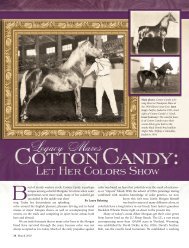Foal Heat Breeding - American Morgan Horse Association
Foal Heat Breeding - American Morgan Horse Association
Foal Heat Breeding - American Morgan Horse Association
Create successful ePaper yourself
Turn your PDF publications into a flip-book with our unique Google optimized e-Paper software.
and/or ovulate after foaling is due primarily<br />
to the effects of season. Consequently,<br />
mares that foal in January through March in<br />
the Northern Hemisphere are most likely to<br />
be affected. Failure of follicular growth in<br />
postpartum mares has occasionally been<br />
attributed to lactation and some mares return<br />
to estrus soon after the foal is weaned.<br />
Management Options<br />
A number of strategies have been used in an<br />
attempt to enhance fertility of mares in the<br />
early postpartum period. Exposure of<br />
pregnant mares to an artificial photoperiod<br />
during the last trimester will shorten the<br />
length of gestation by 7 to 10 days and<br />
decrease the risk of returning to a state of<br />
ovarian inactivity or anestrus following<br />
foaling. Administration of progesterone or<br />
Regumate to postpartum mares has been<br />
used in an attempt to delay the first<br />
ovulation and enhance pregnancy rates, but<br />
results have been inconsistent. It used to be<br />
trendy to lavage the uterus of mares 1 to 2<br />
days after foaling. However, clinical trials<br />
concluded that routine uterine lavage did not<br />
increase pregnancy rates in normal postfoaling<br />
mares. Oxytocin or prostaglandins<br />
are sometimes used in post-foaling mares to<br />
promote uterine contractions and thereby<br />
eliminate fluid and debris and decrease the<br />
size of the uterus in an attempt to enhance<br />
foal heat conception rates.<br />
A simple, common strategy to optimize post<br />
partum conception rates in mares with<br />
uncomplicated foalings is to have the mare<br />
examined by ultrasound on days 7 and 9<br />
post foaling. Mares that ovulate on or<br />
before day 9 are not bred, but are<br />
administered prostaglandins 5 days after<br />
ovulation to bring them back into heat (i.e.<br />
short-cycled). Mares that still have a large<br />
follicle 9 days post-foaling are bred using<br />
standard techniques. The use of ovulationinducing<br />
agents (i.e. hCG or GnRH) is<br />
discouraged until day 9 or 10, since<br />
ovulations early in the postpartum period<br />
may not be as fertile.<br />
In general, owners are encouraged to breed<br />
mares during the foal heat period. However,<br />
mares that experienced foaling or<br />
postpartum complications (i.e. dystocia,<br />
retained placenta, prolonged discharge, etc)<br />
may have a decreased foal heat pregnancy<br />
rate or an increased embryonic loss rate.<br />
Consequently, it may be advisable to breed<br />
such mares on the second postpartum estrus<br />
(30 day heat) or a later heat period.<br />
2



